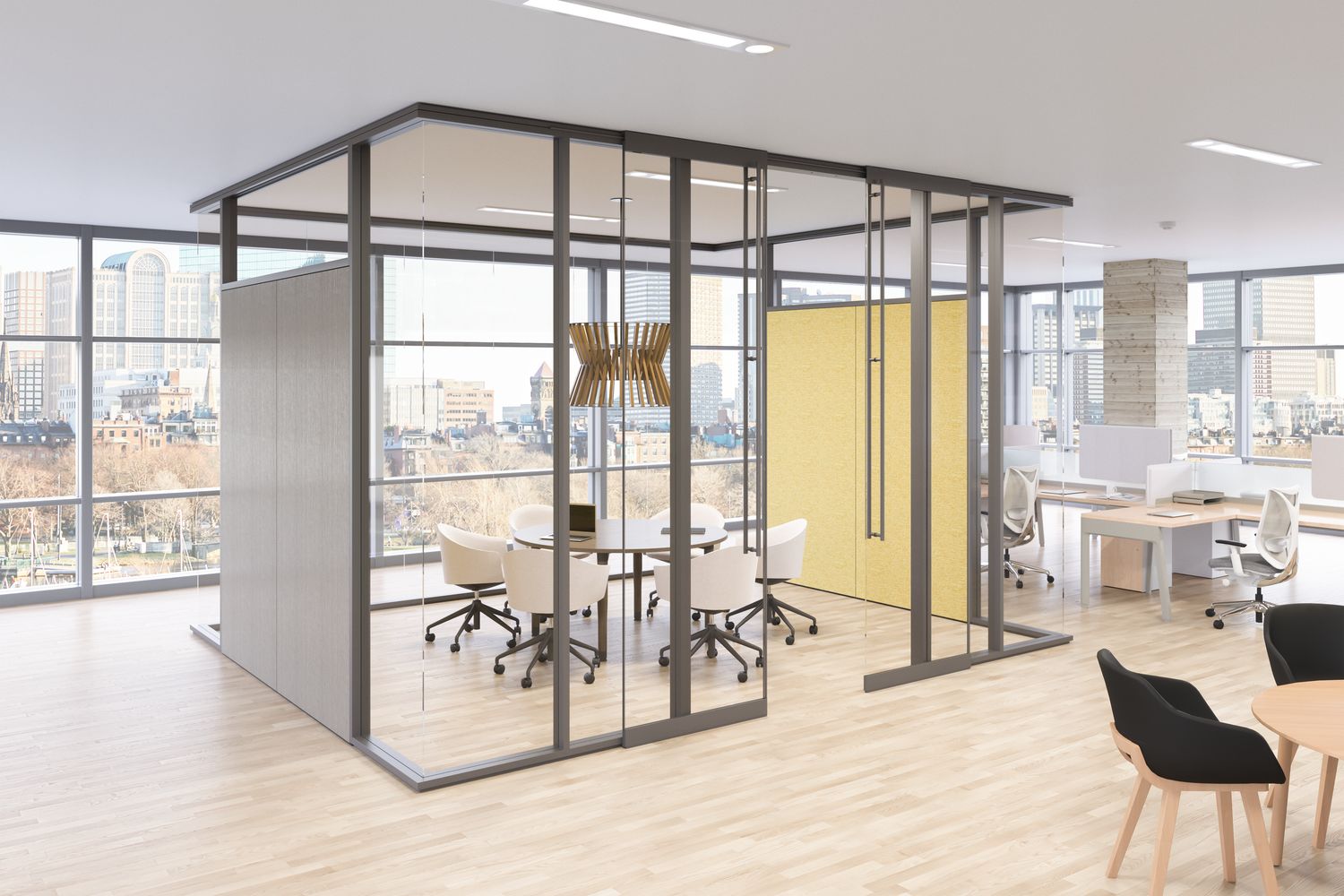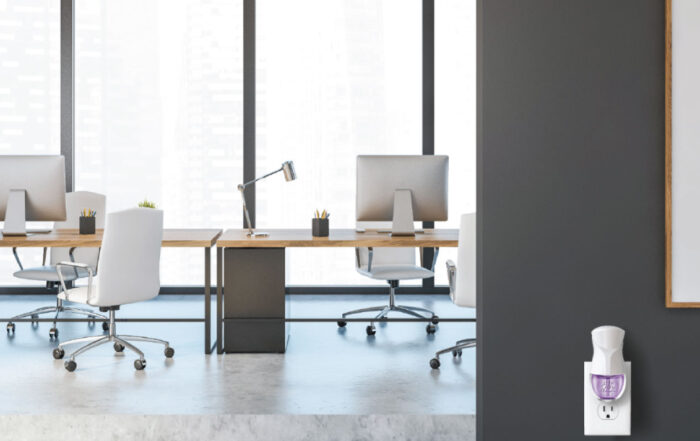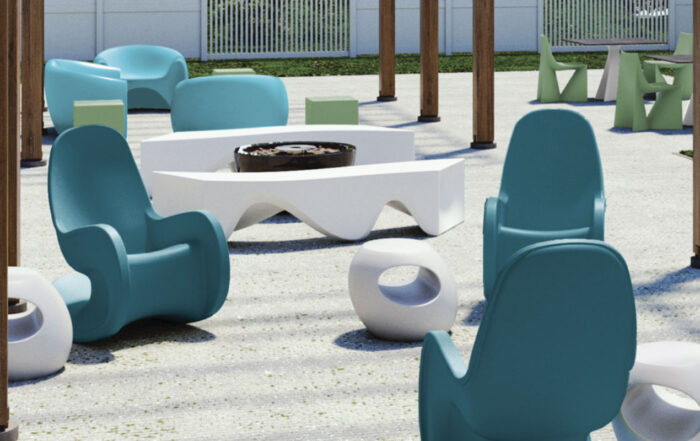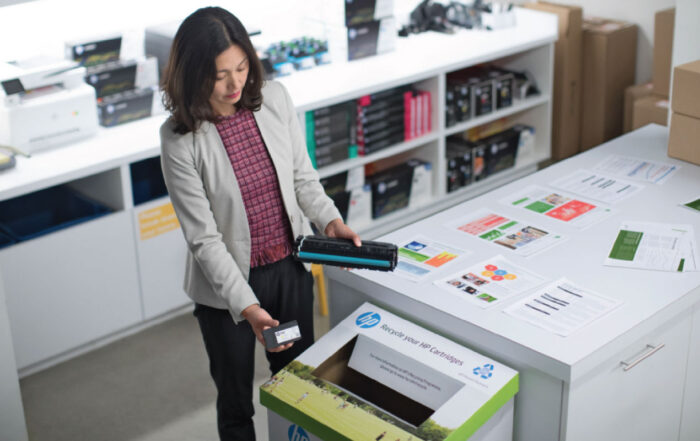Although offices have evolved during the past decade, they may need to be entirely rethought and transformed for a post–COVID-19 world. We all have ideas about what a typical office looks and feels like: a mixture of private offices and cubicles, with meeting rooms, break areas, and shared amenities. However, few offices have been intentionally designed to support the hybrid workforce. In order to maintain productivity, collaboration, learning, and upholding the corporate culture, the boundaries between being physically in the office and remote work must collapse. Incorporating huddle rooms in an open-office plan encourages the hybrid workforce while effectively utilizing your space.
The Open Office
An open office is an open-plan work environment where there are limited enclosed office rooms or walled cubicles for employees. Open plans are a natural fit for the mobile mindset – a preference for using personal devices and spending less time in the office. Many offices today have evolved to an open plan. In fact, around 70% of U.S. offices include some type of open floor plan.
Key Benefits
- Increased Collaboration: The open floor plan is praised for boosting collaboration. It encourages the flow of information across the workplace.
- Cost-Effective: Embraced for cost-cutting advantages, open layouts maximize existing space while minimizing costs.
- More Relationship-Building Interactions: A cubicle office encourages employees to keep their heads down and continue working in a single-minded way. But in a shared space, employees are more approachable and accessible.
- Flexibility for the Future: The office is ever-evolving. Open office plans now can help create a more flexible space for the next new configuration trends.
- Employee Wellness: An open floor plan office benefits employee health as these arrangements encourage getting up to move around more often.
Huddle Spaces
Huddle rooms and spaces are strategically small meeting spaces that are designed to empower people to meet quickly and easily. These small conference areas are equipped with audio, video and display system technology. Huddle spaces also eliminate the hassle of reserving a room and encourage collaboration and conversation.
Key Benefits
- Space Utilization: Huddle rooms are great for turning small unused rooms, into purposeful meeting spaces.
- Increased Collaboration & Effective Teamwork: Huddle rooms boost creativity and problem solving while improving efficiency & productivity.
- No Reservation Needed: Perfect for impromptu meetings, huddle rooms eliminate the need to schedule meetings.
- Inexpensive: Huddle rooms are cost-effective and many times can utilize unused rooms and spaces that are already in your office.
- Prioritizing Large Rooms: By providing small meeting spaces quick work sessions and meeting, you can utilize your larger rooms in a more efficient manner. No more wasted space and empty chairs!
- Inclusive: Not only do huddle rooms support today’s hybrid workforce, they also make sure remote/hybrid workers are able to easily use meeting spaces that may not normally be available to them.
Converting Existing Spaces
Open Area to Minimalist Huddle Space
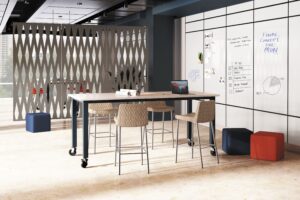 Limited space? You may not even need a room to create a huddle area. These are created by designating a space within a space. They can be defined by furniture grouped to enable informal conversations. A design-friendly privacy screen could also be added to divide the space. Workers can drop by to converse, or they may use personal devices to launch a video conference or collaboration app. Furnishings and equipment typically include a small table, a few chairs, and possibly a speaker and whiteboard.
Limited space? You may not even need a room to create a huddle area. These are created by designating a space within a space. They can be defined by furniture grouped to enable informal conversations. A design-friendly privacy screen could also be added to divide the space. Workers can drop by to converse, or they may use personal devices to launch a video conference or collaboration app. Furnishings and equipment typically include a small table, a few chairs, and possibly a speaker and whiteboard.
Private Office to Mid-Level Huddle Room
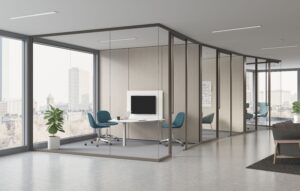 Many companies equip huddle rooms with added tech for enhanced closed-door collaboration. Private offices often already have AV incorporated and can easily be transformed into a technology friendly huddle space. This can include ceiling- or table-installed speakers and mics, headsets and a video conferencing camera. These rooms may also include network connectivity and an LED display or an interactive display/projector. Tech may be provided to enable users to stream content from their personal devices.
Many companies equip huddle rooms with added tech for enhanced closed-door collaboration. Private offices often already have AV incorporated and can easily be transformed into a technology friendly huddle space. This can include ceiling- or table-installed speakers and mics, headsets and a video conferencing camera. These rooms may also include network connectivity and an LED display or an interactive display/projector. Tech may be provided to enable users to stream content from their personal devices.
Private Office to Basic Huddle Room
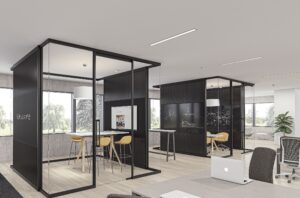 Private offices are being used less and less. Most are big enough to be converted into a basic or mid-level huddle room. At its most basic, a walled huddle room will include a central surface with at least 4 chairs. It should contain one or more whiteboards or a display device for creative and collaborative work. AV experts would also recommend including a conference system with a speaker and a microphone.
Private offices are being used less and less. Most are big enough to be converted into a basic or mid-level huddle room. At its most basic, a walled huddle room will include a central surface with at least 4 chairs. It should contain one or more whiteboards or a display device for creative and collaborative work. AV experts would also recommend including a conference system with a speaker and a microphone.
Scheduled Meeting Area to High-End Huddle Rooms

Scheduled meeting areas are the easiest spaces to transform to huddle rooms. They are usually already extensively-equipped with technology and set up for collaboration. However, if the a room is too large it run the risk of a becoming mini-boardroom. This may cause them to lose the immediacy that makes huddle rooms powerful collaboration spaces. Try to limit the space to six chairs around a central surface. These amped-up rooms add to the capabilities offered in typical huddle rooms. They may include plug-and-play technology, multiple wall-mounted digital displays or built-in video conferencing systems.

